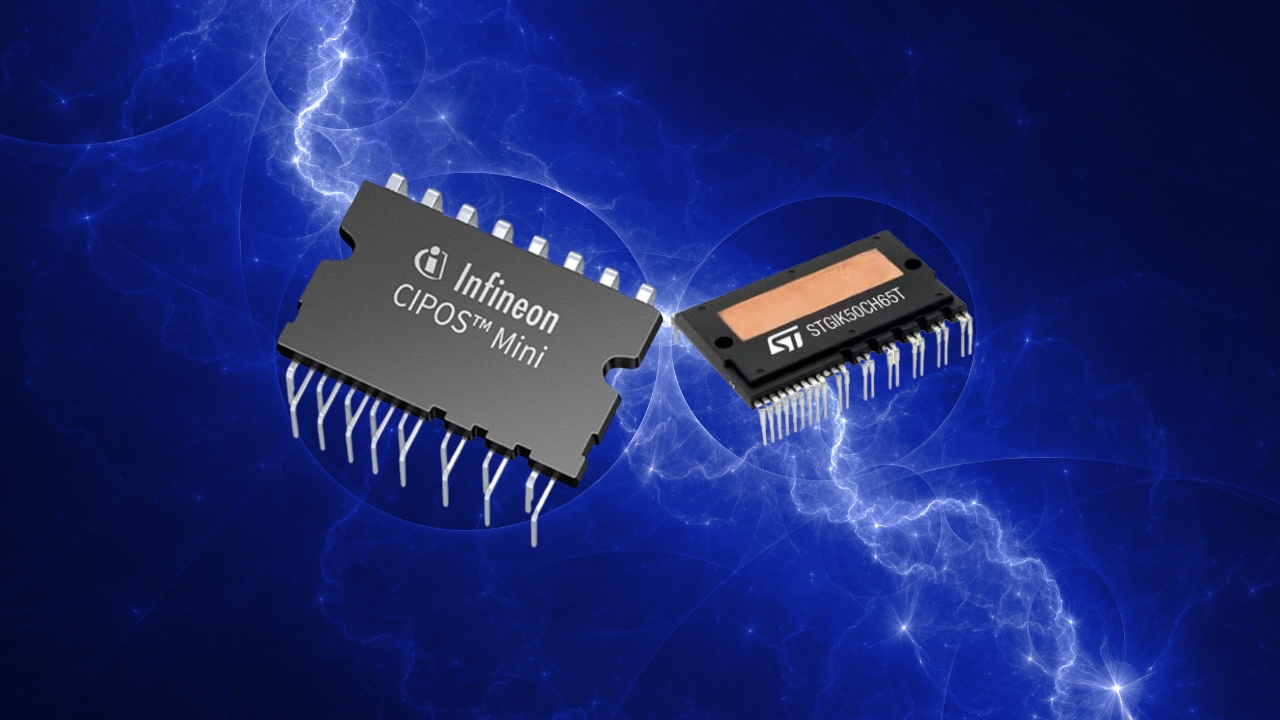
Maybe you've heard of IPM chips, or maybe they don't even sound familiar to you at all. However, they have multiple applications in different sectors of the industry and also in DIY projects with motors, for example, so in this article we are going to discuss them so that they have no secrets for you.
These integrated circuits They can be very practical, as you will see, and you can find them in various variants or from various manufacturers, such as Infineon, STMicroelectronics, etc.
What is an IPM?
Un intelligent power module or IPM (Intelligent Power Module) It is an advanced, on-chip solid-state power switching device. The term “power module” refers to the presence of a power switching component (usually an IGBT-type transistor), and the module is “smart” because it includes additional control and protection circuitry. The objective is to optimize performance and facilitate the design and implementation of the overall solution.
IPMs use semiconductor devices for high power switching. These devices can be FET, BJT or IGBT, the latter being the most common, although everything will depend on the application for which this IC is going to be used.
An IPM involves much more than simply turning a transistor on and off, and incorporates essential features as they can be:
- Gate drive circuits- They must apply the proper voltage and supply large amounts of current for fast switching.
- Gate drive logic- Can be designed to prevent high-side and low-side IGBTs from conducting simultaneously. This functionality is known as trip protection, cross conduction prevention, or interlock circuits.
- Protection circuits- They must be able to detect and address overcurrent, overvoltage, short circuit and undervoltage conditions.
- Communication functionality- If the system needs to maintain logs of fault events or operating temperatures, some form of communication functionality will be required.
- Power factor correction (PFC)- Some applications require power factor correction (PFC).
Among the IPMs on the market, we can find a large number of models, some of them manufactured by companies such as Infineon or STMicroelectronics, and mostly intended for the automotive sector, for different engine control systems, although they can also be found in many other applications...
Types or families
All the families of these IPM modules Commercials can sometimes be divided according to characteristics, such as:
- Compact: They are highly integrated and compact power modules. They are designed to drive motors in applications ranging from appliances to fans, pumps and general purpose drive units. They also include the CIPOS Nano and Micro series, among others, which is a family of ultra-compact and highly integrated power modules for consumer, residential and light industrial applications. There are also for three-phase systems.
- Standard: They are robust and simplify the design of the motor drive system. It involves products from surface mounted CIPOS Tiny, Nano, Micro and Mini to standard CIPOS modules covering a power range from 20W to 5kW.
- Performance: designed for very high power applications or applications that require superior performance in terms of energy efficiency, power density, system robustness and reliability compared to the previous ones.
Each one designed for different applications or needs, which will depend on what you want.
Applications of IPMs
The IPM are most closely associated with motor control, but they are also used in uninterruptible power systems, inverters and renewable energy systems, etc. Therefore, they can be found in a multitude of equipment, such as:
- Vehicle engine control- IPMs are essential in motor control due to their ability to handle high currents and voltages, as well as their ability to provide protection and control.
- Uninterruptible Power Systems (UPS)- Used in UPS/UPS to provide a reliable and constant power source.
- Converters/inverters: also present in systems to convert direct current into alternating current.
- Renewable energy systems: IPMs can be in systems such as solar and wind energy systems, to convert and control the energy generated.
- Home Appliances: to control motors and other components that require power.